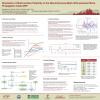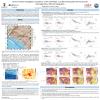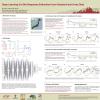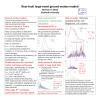Poster #220, Ground Motions
A frequency-dependent spatial correlation model of within-event residuals for Fourier amplitude spectra
Poster Image:
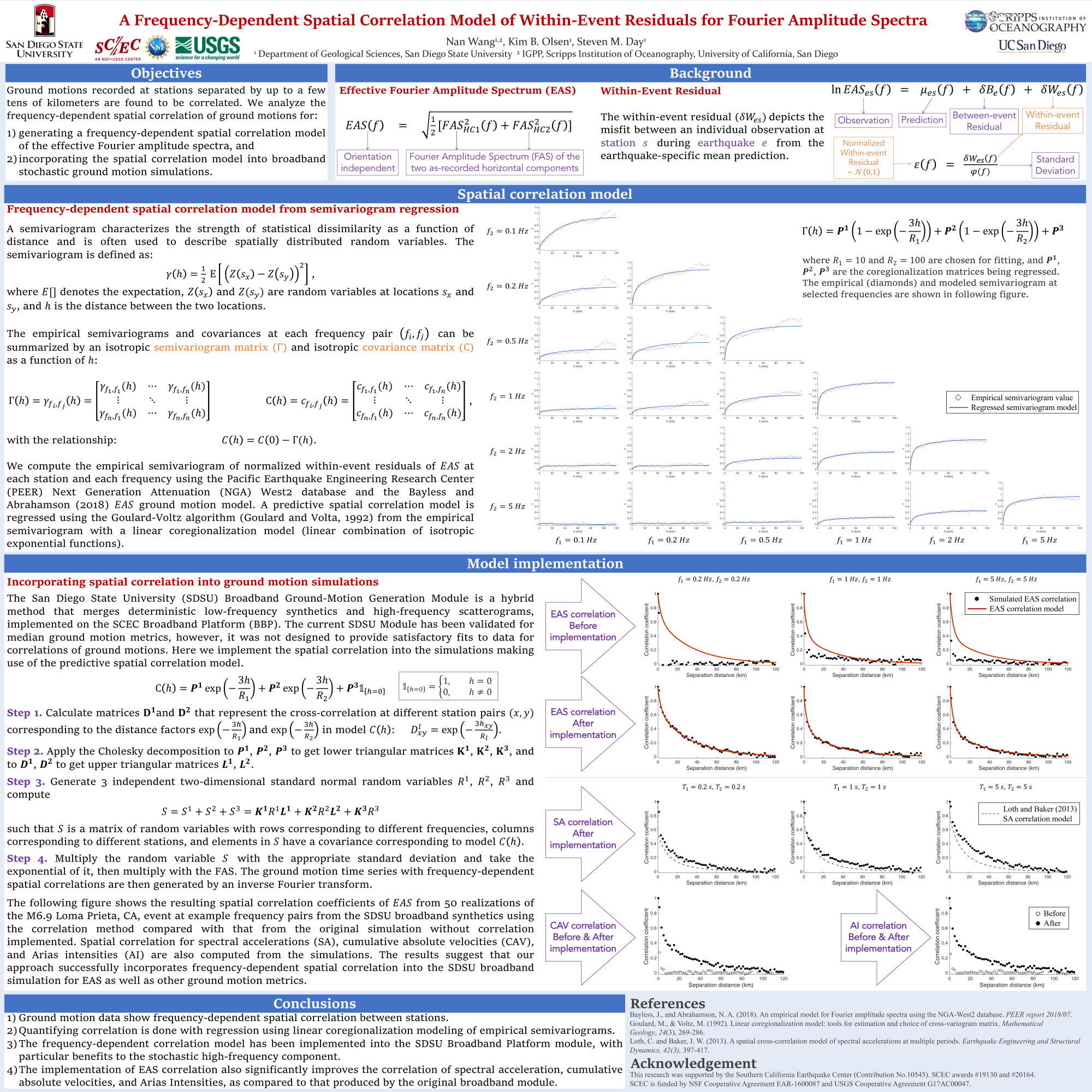
Poster Presentation
2020 SCEC Annual Meeting, Poster #220, SCEC Contribution #10545 VIEW PDF
he semivariogram from data using the Goulard-Voltz algorithm (Goulard and Voltz, 1992) for frequencies from 0.1 Hz to 20 Hz and separation distances up to 120 km. No significant magnitude dependence is found for the spatial correlation coefficients.
Since exclusion of spatial correlation in ground motion simulations can result in an under-estimation of the seismic risk, the developed frequency-dependent spatial correlation has been implemented into the San Diego State University ground motion generation module on the Southern California Earthquake Center Broadband Platform using a post-processing method. This method makes use of three independent two-dimensional Gaussian random variables with covariance corresponding to the three functions of the spatial correlation model. We present results from applying the method to several historical earthquakes in the western USA. The results indicate that the spatial correlation model for FAS is consist with the model for spectral acceleration (Loth and Baker, 2013), providing an additional improvement of the spatial correlation in spectral accelerations.
SHOW MORE
Since exclusion of spatial correlation in ground motion simulations can result in an under-estimation of the seismic risk, the developed frequency-dependent spatial correlation has been implemented into the San Diego State University ground motion generation module on the Southern California Earthquake Center Broadband Platform using a post-processing method. This method makes use of three independent two-dimensional Gaussian random variables with covariance corresponding to the three functions of the spatial correlation model. We present results from applying the method to several historical earthquakes in the western USA. The results indicate that the spatial correlation model for FAS is consist with the model for spectral acceleration (Loth and Baker, 2013), providing an additional improvement of the spatial correlation in spectral accelerations.
SHOW MORE




